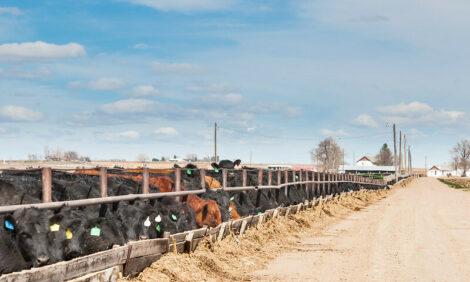



Giant Cattle To Be Bred Back From Extinction
UK - Depicted in prehistoric cave paintings, giant cattle that have not roamed Europe for 400 years may make a come back as Italian scientists hope to recreate the Auroch.According to The Telegraph, Italian scientists are hoping to use genetic expertise and selective breeding of modern-day wild cattle to recreate the fearsome beasts which weighed around 2,200lb and stood 6.5 feet at the shoulder.
Breeds of large cattle which most closely resemble Bos primigenius, such as Highland cattle and the white Maremma breed from Italy, are being bred with each other in a technique known as "back-breeding".
At the same time, scientists say they have for the first time created a map of the auroch's genome, so that they know precisely what type of animal they are trying to replicate.
"We were able to analyse auroch DNA from preserved bone material and create a rough map of its genome that should allow us to breed animals nearly identical to aurochs," said team leader Donato Matassino, head of the Consortium for Experimental Biotechnology in Benevento, in the southern Campania region.
"We've already made our first round of crosses between three breeds native to Britain, Spain and Italy. Now we just have to wait and see how the calves turn out."
The last animal disappeared from the British Isles in the Iron Age and the breed was declared extinct in 1627 after a female died in the forests of Poland.
Aurochs are depicted in ochre and charcoal in paintings found on the walls of cave galleries such as those at Lascaux in France and Altamira in Spain. Caesar described them in The Gallic Wars as being "a little below the elephant in size" and a favourite hunting prey for wild Germanic tribesmen.
Their abiding mystique means they remain as the symbol of several states and cities in Europe, having figured prominently in Teutonic folklore. In ancient times, killing an auroch was seen as a great demonstration of courage, with the horns turned into silver-clad drinking cups.
The last time there was an attempt to recreate the animal was on the express orders of Hitler. The Nazis ordered a pair of German zoologists to recreate the auroch as part of the Third Reich's belief in racial superiority and eugenics.
Herman Goering hoped to use the aurochs to populate a vast hunting reserve which he planned to create in the conquered territories of Eastern Europe.
Many geneticists argue that though the Heck may resemble their ancient forebears, they will be genetically very different.
"There are a number of rare breeds that have been brought back to life in recent years, such as the Cumberland pig," said Dr Claire Barber, from the Rare Breeds Survival Trust. "But our view is that what has been recreated is something that looks like the old breed, but which is not genetically the same.
"You would need to interbreed animals that are very close to the auroch in their genetic make-up. The closest you could find in Britain are two semi-feral breeds: the Chillingham and the Vaynol. If there are breeds which maintain many of the attributes of an auroch, then it could well be feasible. It's certainly a very exciting project," she told The Telegraph.
If the Italian-led project is successful, it will raise questions of what to do with an animal which boasts a size and temper akin to a tetchy rhinoceros.
"Even the wild cattle we have today are very hard to handle and an auroch would be even more difficult," said Dr Barber. "Aurochs were significantly larger than any cattle in existence and they would be potentially dangerous.
"There would be some serious management issues – to look after their teeth and feet, for instance, you might have to sedate them with dart guns.
"You wouldn't want to try to milk one – that's assuming that the females produced milk when they didn't have calves."
TheCattleSite News Desk


